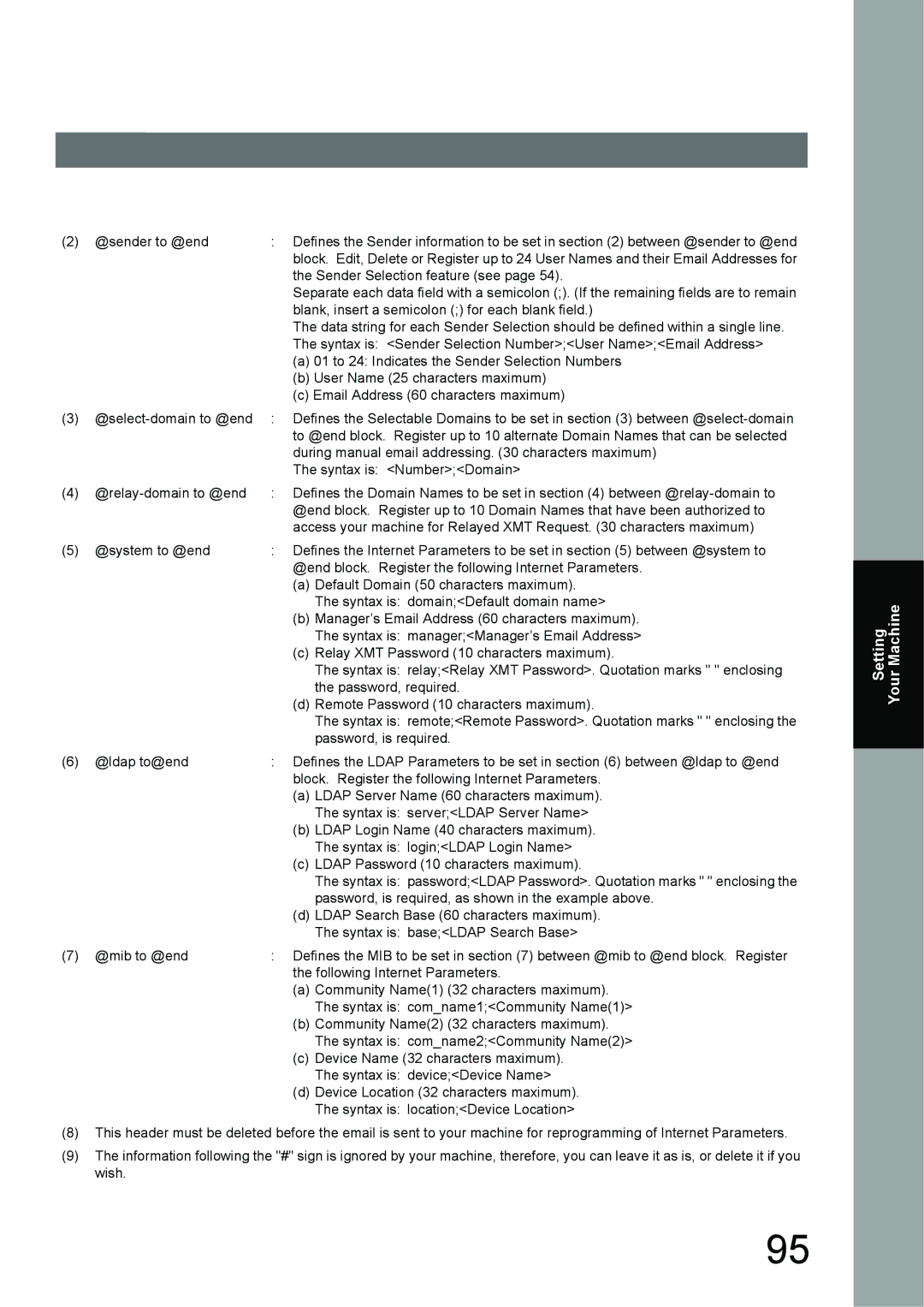UF-7950, UF-6950 specifications
The Panasonic UF-6950 and UF-7950 are sophisticated digital multifunction copiers designed for high-performance office environments. Both models cater to the increasing demand for efficient document processing, offering advanced technologies that enhance productivity and streamline workflows.The UF-6950 is optimized for speed and efficiency, boasting a rapid print speed of up to 40 pages per minute. It supports a range of media types, from standard letter-sized sheets to envelopes and labels, making it a versatile choice for any office setting. Equipped with a user-friendly interface, it allows for intuitive navigation and quick access to essential functions.
In contrast, the UF-7950 takes productivity to the next level, achieving speeds of up to 50 pages per minute. This model is particularly tailored for high-volume environments, featuring a robust monthly duty cycle that ensures reliable performance even under heavy workloads. Both models support automatic duplex printing, reducing paper consumption and contributing to sustainable office practices.
One of the standout technologies in the UF-6950 and UF-7950 is the advanced image processing capability, which ensures sharp, high-quality prints with defined text and vibrant graphics. The True Image technology employed in these models minimizes image distortion and enhances the clarity of scanned documents, making them ideal for both professional and creative uses.
The scanning functionality is another highlight, with both models offering high-resolution scanning that supports various formats. Users can quickly digitize documents for easy sharing and storage, utilizing features like one-touch scanning to save time and streamline office tasks.
Additionally, the Panasonic UF series is equipped with secure printing features and user authentication capabilities, protecting sensitive information and ensuring that documents are only accessed by authorized personnel. This emphasis on security is vital in today’s data-driven business landscape.
With their compact designs and energy-efficient operations, the UF-6950 and UF-7950 are excellent choices for businesses looking to enhance their document management systems. Their ability to handle diverse tasks from printing and scanning to copying and faxing makes them indispensable assets for any modern office. Panasonics commitment to reliability and innovation is evident in these models, perfectly merging technology with practical functionality to meet the needs of today’s fast-paced work environments.

